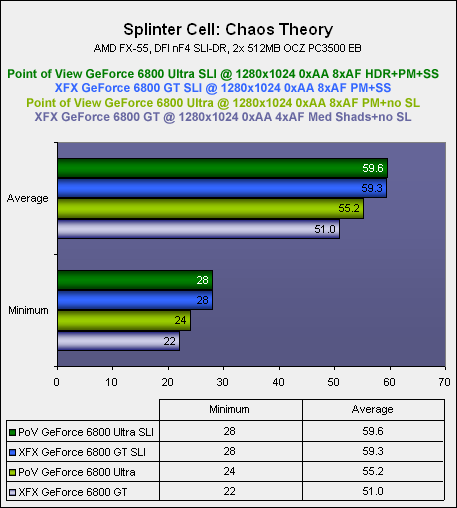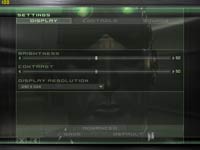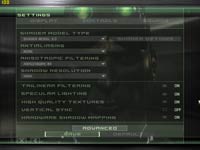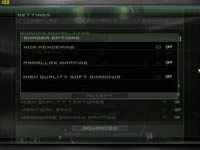
Splinter Cell: Chaos Theory
Publisher: UbisoftWe are using the full version of Splinter Cell: Chaos Theory patched to version 1.02. It features a new game engine that has been created around a heavily modified Unreal Engine 2 - the important thing to note is that the game only has two Shader profiles: Shader Model 1.1 and Shader Model 3.0. This means that all of ATI's video cards default to Shader Model 1.1, and only the GeForce 6 series are capable of using the Shader Model 3.0 path.
Despite the fact that ATI's cards only use a DirectX 8.1, Shader Model 1.1 path, the quality of rendering is fantastic in comparison to the Shader Model 3.0 rendering. However, the Shader Model 3.0 profile means that the GeForce 6 series video cards are given a number of options for additional eye candy, including Parallax Mapping, High Dynamic Range Rendering, Tone Mapping and High-Quality Soft Shadows. These can all be enabled on GeForce 6 series video cards, and will make the gaming experience more realistic providing there is enough graphics processing power available.
We configured both Anti-Aliasing and Anisotropic Filtering from within the game, and thus the driver control panel was left set to "Application Controlled".
Splinter Cell: Chaos Theory also uses the somewhat favoured Alternate Frame Rendering method that we've seen used across four of six titles that we have evaluated here. This is despite NVIDIA making big noises about Split Frame Rendering back when it was initially launched. It's somewhat of a surprise to see so many games using AFR, but it looks as if NVIDIA have found that it delivers better performance.
Again, it is another custom algorithm for the alternate frame rendering method used, as determined by the SLI profile in nvapps.xml:
< PROFILE Label="Splinter Cell Chaos Theory">The title has a large number of additional graphics options that come in to play when using SLI. We have seen High Dynamic Range Rendering and Soft Shadows in some of the other titles, but they have not been playable due to a lack of power from the video cards, or just because it is an early implementation and isn't quite optimised to make best use of an SLI setup. This is where Splinter Cell: Chaos Theory comes in to its own.
< APPLICATION Label="splintercell3.exe"/>
< PROPERTY Label="multichip_rendering_mode" Value="2400801" Itemtype="predefined"/>
< /PROFILE>
We found that 1280x1024 was the base resolution that we could use across the board, just disabling parts of the graphical options. On the XFX GeForce 6800 GT we found that we had us to set the shadow resolution to 'Medium' while disabling Specular Lighting. All of the additional Shader Options were left disabled, while 4xAF and Hardware Shadow Mapping were applied.
On the single Point of View GeForce 6800 Ultra, we found that we could apply 8xAF to the scene while enabling Parallax Mapping, Hardware Shadow Mapping, and High-Resolution Shadows. However, we could not enable Specular Lighting as it had too much of a performance impact during our manual run through - we would have had to lower the resolution to 1024x768 to get acceptable performance.
The title scaled very well with SLI - when we added a second GeForce 6800 GT in to our system, we could enable Parallax Mapping, Specular Lighting, Hardware Shadow Mapping, High-Resolution Shadows and High Quality Soft Shadows along with 8xAF. This allowed us to experience a smooth gaming experience while the game also looked fantastic at the same time.
With the Point of View GeForce 6800 Ultra SLI, we could apply all of the options for the GeForce 6800 GT SLI, along with HDR, to provide awesome looking shadows and real-time lighting. We could experience Splinter Cell: Chaos Theory in all of its glory on the GeForce 6800 Ultra SLI, with only Tone Mapping left disabled.

However, when we used two video cards in SLI, Specular Lighting really gave a great image quality boost, while not hitting performance in the same way that was experienced when we used a single card in our system.

MSI MPG Velox 100R Chassis Review
October 14 2021 | 15:04










Want to comment? Please log in.